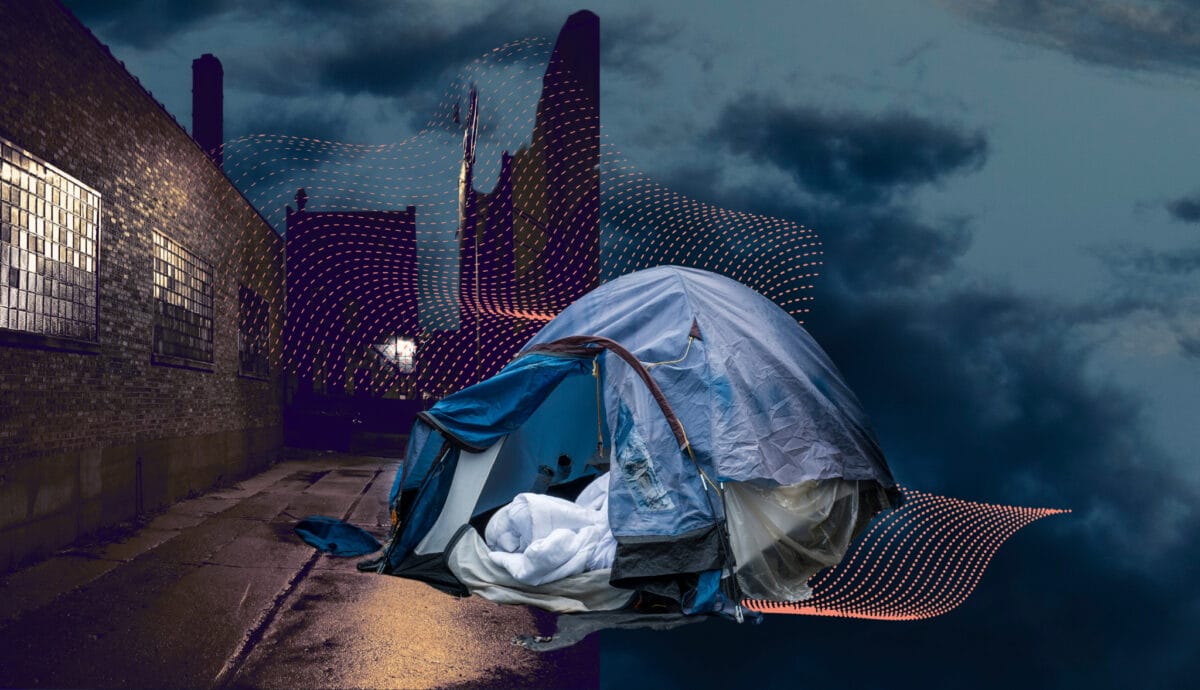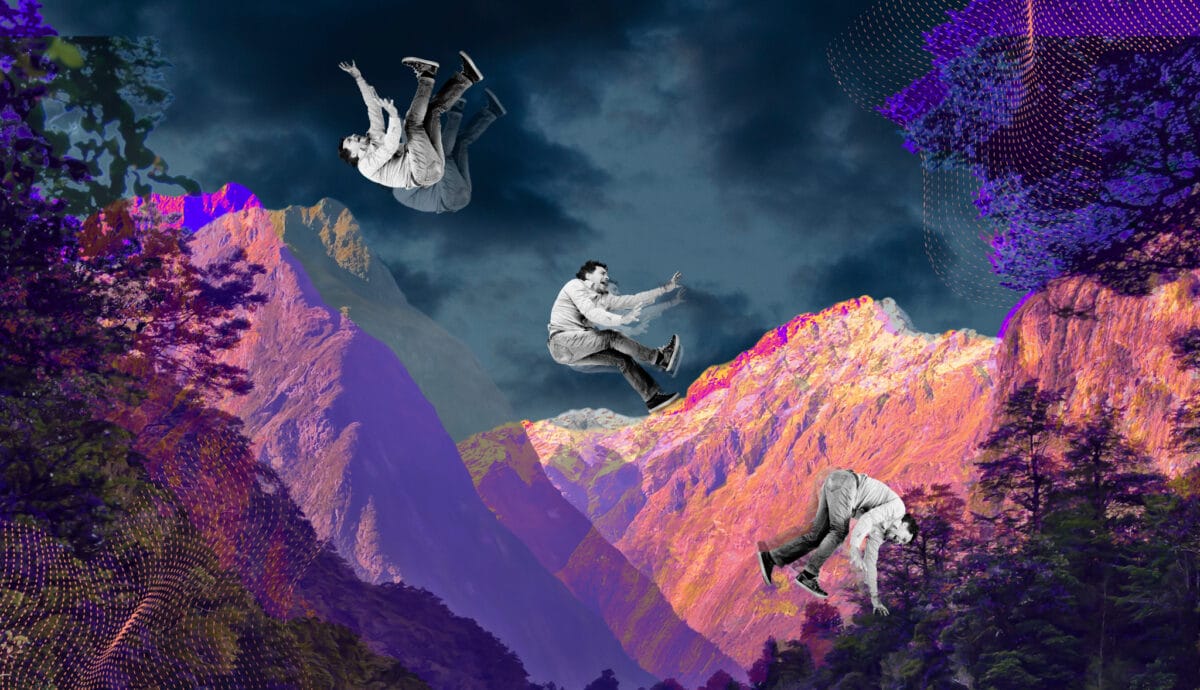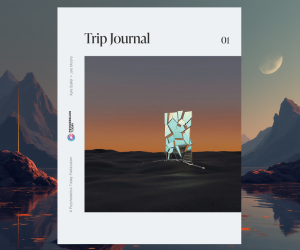Bogdan* is a 43-year-old asylee who lives in New York City. He has a Master’s degree from the University of Sussex. He used to live in student accommodation on the King’s Road near my old house in Brighton on the south coast of the UK, but he is currently homeless and living in what he calls a “ghetto.”
A series of highly traumatic ayahuasca trips with a famous ‘shaman’ led Bogdan to become seriously ill. It wasn’t helped by later trips with LSD and san pedro, either. Blighted by a debilitating mixture of chronic pain, anxiety, depression, and brain fog, he says he “feel[s] like a 100-year-old Alzheimer’s patient.” Bogdan suggests that successive traumas have left his central nervous system “fried.” He has no medical insurance, and so cannot pursue the Somatic Experiencing therapy people have encouraged him to try.
Bogdan did five sessions with ICEERS’ free integration service, but he doesn’t think “just talking with someone on Zoom will help” him. A cash handout from the local Eastern European community was helpful, yet it only lasted so long. One wonders how much processing his ‘stored trauma’ would alleviate living in a homeless shelter.
Or take Kristen*, a 39-year-old who participated in a Canadian clinical trial for psilocybin. In between each dose of psilocybin, Kristen developed debilitating spikes in anxiety that eventually manifested as a visual complaint, which in turn flowered into full-blown HPPD after two ‘therapeutic’ trips once the trial ended. What was driving Kristen spikes in anxiety? It wasn’t only the likely dysregulating effects of psilocybin’s serotonin dump. It was also significant financial stress. That didn’t just go away.
For those with severe HPPD, the visual presentation is so intense as to impair one’s ability to work. Reliance on scant welfare and disability benefits is not unheard of; I remember a phone call with one long standing HPPDer who was on the continual brink of homelessness for the destabilizing and disabling effects of his condition.
Possibly as many as 60% of homeless people have schizophrenia, and over half may have serious mental health problems. If we take seriously how dangerous psychedelics can be, these will be the outcomes. There will be many more people like Bogdan, Kristen, or those whose lives are destroyed by HPPD, increased anxiety, depression, or brain fog brought on from a challenging experience with no support, or simply the financial and life stress that continue on after even the greatest experience. Suicide is a tragic and occasional fact one cannot escape in HPPD communities – something that has been openly acknowledged by the late, great Roland Griffiths.
So what is the answer? As is hopefully becoming clear, ‘harm reduction’ is not just a matter of appropriate drug testing or set and setting and integration. It is a matter of having enough money to muffle a mental health crisis’ worst outcomes – to pay for help, stay housed, and stay healthy amid the stress and chaos that can follow a trip. Simply put, if we want to help those most affected by the challenges of psychedelic exploration, there may be a case for direct monetary transfers: giving people money to safeguard their material container.
A Cost of Living Crisis
There is a curious gap, a kind of Uncanny Valley, between our dreams of healing the ‘Mental Health Crisis’ with psychedelic mystical trips, while an arguably more primary Cost of Living Crisis is tearing apart people’s wallets. The association between anxiety, depression, addiction, and poverty is well known, and requires no elucidation. Even those who are not on the streets or actively facing homelessness in the future need money.
Have you looked at how expensive therapy is lately? $75-$150 a session is not viable for someone on a low income, so what could be a necessity becomes necessarily optional. It’s the same for gym memberships, exercise equipment, or good food and nutritional check-ups: all vital ingredients for good mental health and recovering from a psychedelic shockwave. The costs of therapy especially can add up while one shops around to find a suitable practitioner, or at least one who isn’t a weirdo – a genuine concern in psychedelic circles.
After an extremely destabilising LSD experience in September 2021 – whose sequelae included a deep depression, cannabis dependency, and suicidal ideation – I first tried a ‘psychedelic integration’ specialist based in Brighton. He wasn’t good. A couple of friends and I were wondering whether to do mescaline together, and I thought that might be a terrible idea. My ‘therapist’ urged me to wonder whether the second thoughts were perhaps the internalized voice of the “free market.” I burned through about £600 with this guy. I then burned through another £350 on another, thankfully more helpful therapist who gave me a discounted rate. It still amounted to £50 a session, or $60 USD.
Most people cannot afford to do this. And if they cannot afford to seek help while suicidal, they may die. We ought to consider the history lessons of psychiatric research. The ‘Decade of the Brain’ set in motion by President Bush in 1989 envisioned a future of revolutionary psychiatric treatments furnished by data from brain imaging and genetic research. This has not happened. Psychiatric outcomes have deteriorated. SSRI medications are of uncertain value relative to placebo and involve a staggering list of side-effects. Neurobiological markers have so far proved too wide and confounded to guide treatments – not least when our brains must exist in a world that’s crumbling.

“[W]hile we studied the risk factors for suicide, the death rate had climbed 33 percent. While we identified the neuroanatomy of addiction, overdose deaths had increased threefold,” Dr. Thomas Insel, the former Director of the National Institute of Mental Health, reflected in his 2021 book, Healing. “While we mapped the genes for schizophrenia, people with this disease were still chronically unemployed and dying twenty years early.”
In many ways, we already know what works: people need social support, housing, good therapeutic rapport, and food on the table. What will spell the difference for many people is the possession of resources that will enable them to reach for such low hanging fruit.
What Would a Harm Reduction Fund Look Like?
It is already well-known that the psychedelic movement is overwhelmingly middle- and upper-middle class and white, and has a particular representation among the aristocracy. The psychedelic movement is mainstreaming, though, and more people of color and low income are joining ranks of users. This means more people are at unnecessary risk, for lack of social and economic resources, of the worst outcomes of psychedelic drugs.
The psychedelic movement needs to own this risk, because the public sector and existing infrastructure probably won’t. As discussed above, welfare support is measly and the most vulnerable will be without medical insurance – if such packages would even cover the debilitations of drugs illegal in many parts of the United States. The Zendo Project, DanceSafe, and Fireside Project are laudable, but their applications for those struggling after their trips are limited.
It is often accepted that some proportion – usually dismissed as a merely ‘rare’ occurrence – of people will be greatly damaged by psychedelic drugs, and end up homeless, dead, or struggling with severe mental illness. What if we stopped accepting these as inevitable?
If we are really interested in harm reduction, one option may be a fund for those harmed by the effects of psychedelic drugs.
Suppose there was a fund of $500,000 – similar to the resources required in a study – which was focused on those facing suicide, homelessness, or mental health crisis after a trip. The details can be discussed and fleshed out by anyone who wants to take my proposal seriously, but it would simply provide bursaries, cash transfers, and much needed subsidies to people struggling in the wake of psychedelic journeys to seek help. Perhaps the effects of the help they seek can be recorded to collect data. Perhaps it could fund legal action against therapists and ‘Shamans’ that leave their clients in tatters, much as Bogdan is facing now. Such projects would likely mean saving or seriously changing dozens of lives. I welcome feedback on my loose suggestion.
Of course, there would be a risk of people ‘gaming’ the system, but I imagine its wastage would be comparable to a study, which has large opportunity costs in terms of the direct help such a fund could provide. Search costs would be invested to ensure the person is who they say they are: interviews, conversations with family members and friends, possible documentation. Different priorities would be made. Do we invest 80% of our budget for search costs on that 20% at the greatest risk of peril? Or ought we to prioritize creating free support in other ways, like expanding free therapies along the lines of ICEERS? Alternatively, as I suggest in a new article for Ecstatic Integration, immediate support could occur through peer support groups organized through Reddit, whose potential is, in many ways, untapped.
Certain challenges would no doubt arise through using private money, as well as exporting what should likely be a government task, such as through a Universal Basic Income – there’s a risk that some measure (number of people helped vs. number of dollars invested) would become a core indicator rather than real value provided. There’s likewise a risk that the kinds of interventions and support deemed worth subsidizing will fit with donors’ own biases, or that the pool of therapists deemed acceptable will be narrow and normative.
I would not be surprised if the data were relatively unsurprising. Income support and housing for those most debilitated would be a clear game changer. Free CBT, EMDR, Somatic Experiencing, Acceptance and Commitment Therapy, membership to a local gym that has a sauna and a pool, or full blood work to scan people’s nutritional deficiencies and inform a better diet would all likely help. These are relatively inexpensive interventions, but the marginal gains are probably enormous, and could be, at the very least, comparable to the hundreds of thousands raised to fund studies – which will not necessarily translate into interventions and treatments, nor with any particular immediacy.

The Psychedelic Movement and Owning the Risk
One may wonder if a post-psychedelic fund is arbitrary. All mental health problems, including but not limited to psychedelics, vary with poverty and access to resources. Why have a post-psychedelic fund and not one concerned with mental health in general? How can we ever separate the two? I suppose similar questions can be raised about the psychedelic sector on the positive end as well. Why the interest in psychedelics, when similar experiences can be engendered by other means like meditation – including with similar risks? To focus on post-psychedelic risk is likewise only repeating the same distinction already explicit in psychedelic risk management: that psychedelic trips can meaningfully create adverse outcomes even while connected to broader life concerns.
Even if this proposal doesn’t make sense to you, something needs to be done to address post-psychedelic harm. I believe we know more than enough to do something right away – and something specifically targeted towards those worst affected, for whom every dollar of subsidy and support reaps massive gains in social benefit – and saves lives.
These are new ideas, but let’s start the dialogue.
*Names have been changed to protect the identity of sources profiled in this writing.



